What are Dimming Curves?
Dimming curves play a crucial role in the world of lighting design and control. But what exactly are dimming curves and how do they impact the way we experience light? Let's find out.
What are Dimming Curves?
Dimming curves refer to the relationship between the light output of a dimmable light source and the control signal it receives. In simple terms, they determine how a light source responds to changes in the dimming level.
Why are Dimming Curves Important?
Understanding dimming curves is essential for achieving the desired lighting effects in a space. By selecting the right dimming curve for a specific light source, designers can ensure smooth and consistent dimming performance without flickering or abrupt changes in light output.
Dimming curves can also be handy for reducing the energy used, and in reducing the strain on the light itself.
Dimming curve settings on the M600D COB LED light
Types of Dimming Curves
Dimming curves are typically represented graphically, showing the correlation between the input signal (dimming level) and the output light intensity. Different types of light sources, such as incandescent, LED, or fluorescent, may have different dimming curves due to their unique characteristics.
There are several common types of dimming curves used in lighting control systems, including linear, logarithmic, exponential, and S-curve. Each type offers a different dimming profile, affecting how the light source transitions from full brightness to complete darkness.
When choosing a dimming curve, factors such as the type of light source, the dimming range required, and the desired dimming behaviour should be taken into account. It's important to test different dimming curves to find the one that best suits your specific lighting application.
|
|
|||
|
Linear Dimming Curve |
S-Curve Dimming Curve |
Exponential Dimming Curve |
Logarithmic Dimming Curve |
| The linear dimming curve offers a consistent and uniform dimming level throughout the dimming range. This means that the light output decreases or increases linearly in direct proportion to the dimming level. Linear dimming is ideal for applications where a smooth and gradual transition in brightness is desired. | The S-curve provides a non-linear dimming response. In this type of curve, the light output changes more gradually at the beginning and end of the dimming range, with a more rapid change in the middle. S-curve dimming is often preferred for creating a more natural and visually appealing dimming effect. | An exponential dimming curve follows a non-linear pattern. The light output decreases gradually at first and then more rapidly as the dimming level is reduced further. This means that small adjustments in the dimming level at the higher end have a minimal impact on the light output, while the same adjustments at the lower end result in a more significant reduction in brightness. | A logarithmic dimming curve adjusts the light output more gradually the higher it goes. When you adjust the dimmer switch on a light fixture with a logarithmic dimming curve, small changes in the dimmer position result in significant changes in light output, that slow at higher levels. |
Lighting Equipment with Dimming Curves
A wide selection of the Godox KNOWLED range utilises dimming curves in their settings! As these lights are designed as professional cinema-grade equipment, so have these settings to allow filmmaking cinematographers and gaffers to be able to set specific dimming settings for projects.
See similar: Your Guide to the Godox KNOWLED LEDs


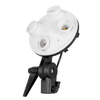


























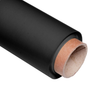















































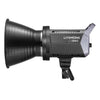
























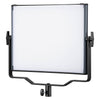



















































































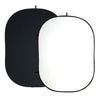




















































































.png?v=1684397912078)





























